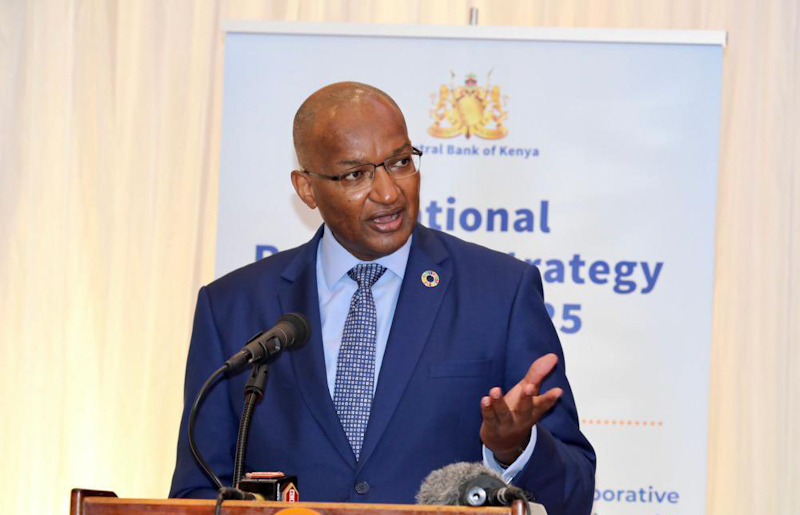Kenya’s Central Bank Wednesday unveiled its national payments strategy 2022-2025 to boost financial inclusion.
The strategy is designed to integrate digital technologies in the economy and boost the attainment of long-term development aspirations ensuring a resilient and robust payments infrastructure designed to facilitate economic activities and support livelihoods.
“The Strategy seeks to realise the vision of a secure, fast, efficient and collaborative payments system that supports financial inclusion and innovations that benefit Kenyans,” Dr Patrick Njoroge, the governor of the Central Bank of Kenya (CBK), said in his remarks.
The National Payment’s vision will be anchored on five core principles: trust, security, usefulness, choice, and innovation.
“The strategy is motivated by a desire to meet the diverse needs of the Kenyan people and its economy, and support our nation’s ambition for a digital, inclusive and 24/7 economy,” he said.
The Strategy, developed through a consultative process is anchored on three themes:
People-centricity
While technology and innovations remain formidable allies, it is easy to fall for their allure.
The test for any technology or innovation, as we push forward our payment frontiers, will be what need they meet. Mobile money has so aptly demonstrated what people-centricity means.
In Kenya and across many other developing, frontier and emerging-market economies, the need to transfer money from rural to urban areas sowed the seeds of the success of mobile money.
Maximizing opportunities while minimizing risks
Technology and innovations present us with opportunities to address the frictions in payment systems.
These include cost, convenience, ease of use and more broadly the customer experience.
The next-generation payments systems that we are aspiring to, come with the promise of instant, cheaper, more convenient and user-friendly services.
But risks lurk in the neighbourhood, including cybersecurity, data privacy and fraud.
To calibrate the balance between risks and opportunities, we shall be guided by the principles in the Strategy.
This will ensure that citizens can trust that their payments will be made on a timely and reliable basis, securely, affordably and conveniently. In effect, this will foster good order in our payment systems.
Collaboration
We cannot do it alone. Payment systems will require to be even more interconnected not just nationally, but regionally and globally.
The cost of cross-border transfers remains high and in the case of remittances way beyond the Sustainable Development Goal (SDG) target of 3 per cent by 2030.
There are encouraging experiments going on globally through collaboration among various central banks.
These initiatives are showing early promise in significantly reducing the cost of cross-border transfers through, for instance, the use of CBDC
“Undoubtedly, we have achieved a lot but much more needs to be done. Whereas the COVID-19 pandemic on one hand accelerated the pace of digitization, it has had scaring effects on lives and livelihoods,” CBK Governor Patrick Njoroge said.
“Nevertheless, broad access to secure and efficient payment systems will be important as we steer back to the path of shared prosperity for our citizens. While each of these innovations offers prospective benefits, there are inherent risks that need to be accessed carefully.”
Has Mobile Money Interoperability Progressed Better Inclusion?
Khusoko is now on Telegram. Click here to join our channel and stay updated with the latest East African business news and updates.




